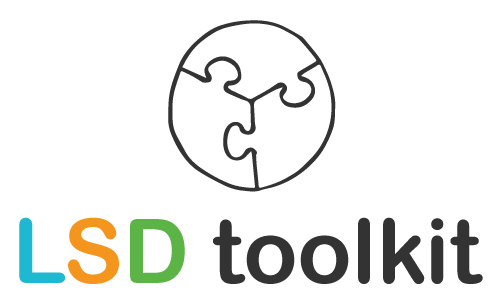And then you have a long list of ideas … But how do you determine the size? The value? The priority? The sentiment? On this page a number of useful ways to gauge the opinion of a group and to arrive at supported decision-making. C onsensus so. But above all: start the conversation!
- Planning poker
This is the best known way of estimating the size of work (often in the form of product backlog items). Sometimes also used for determining value. There is enough written and known about this, but for those who want to know more . - T-shirt sizing
No Fibionacci series as in planning poker, but t-shirt sizes. from XXS to XXL. Also known, so more behind this link . - Dotvoting So
voting with dots. You simply and effectively choose the most important items from a number of items according to the group members.
Method: collect ideas from the group with one of the liberating structures. For example on a whiteboard as text or (preferably) on post-it’s. Each person present receives a highlighter / marker and can put three dots. He / she points out the three items (post-it’s) that are most important to him / her. When everyone has ‘voted’, arrange the items in order of the number of ‘dots’. Discuss as many as you consider necessary or fit within the timebox. - Floor voting
Voting with dots, but then on the floor. Handy, for example, to gauge sentiment in a group.
An example: at the end of the SAFe PI event, do you want to know about the confidence in feasibility? Have we planned a realistic amount of work? Place five large dots on the floor on a slice. In different colors and marked with a large 1, 2, 3, 4 and 5. Give a short explanation (‘go to the 1 if you have no confidence at all and the 5 if you are completely convinced that we are going to make it’) and let the participants choose their place. Then let the groups explain their choice over and over again. Certainly loners do well - Over the line
Similar to floor voting but with only two choices made by standing on one side of a line drawn on the floor (painter’s tape works well). Yes or no. agree or disagree. Light or Dark. Etcetera. - Hand voting
No planning poker cards to hand? There are five fingers on the same hand. Including the fist, you have 6 variants. One fist means totally disagree and five fingers totally agree. count down ‘1… 2… 3…’ and raise your hand at the same time. Be sure to discuss the extremes (and watch out for the jokes that the hitler salute brings). - Deep Democracy
Reaching consensus in a (large) group is difficult. The Liberating structures are intended for this. An alternative (and probably a source of inspiration) to the Liberating Structures is Deep Democracy by Myrna Lewis * . This is a set of methodologies to give everyone a voice. Read here an introduction to how deep democracy works .
* Myrna comes from post-apartheid South Africa, something that shaped her and clearly influences her vision and methodology.
Do you have fun ways or to vote, email them!
